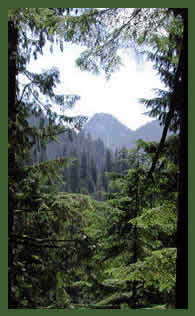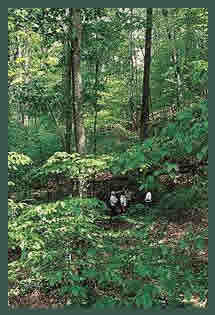|
RTI startup began in January 2000 with the approval of a federal
grant to UW/WSU Extension. A Rural Advisory Board was established
and project priorities set. Every January since the startup, RTI
hosts the Annual Technical Review. It is at this review that the
new priorities are set for the upcoming year. Below are some priorities
that were set by the Rural Advisory Board at the Annual Technical
Review that took place in January of 2003.
Rural Advisory Board priorities:
- Monitor and support the DNR
Habitat Conservation Plan (HCP)/ Sustainable
Harvest Calculations (SHC) process.
- Continue researching how the NIPFs in the state are responding
to the forest and fish regulations (buffers, easements,
and RMAPs), with the objective of assessing the impacts
of the regulations, how small forest owners are reacting,
and why.
- Provide more detailed analysis of the economic and other
non-market benefits of species alternatives (alder and cedar
vs. hemlock and fir). For a related slide show or video
presentation about Changing Markets for PNW Logs,
click here.
- Alternative plans to new regulations are too short term
and too difficult to implement. Develop templates (site
condition sensitive) that will make alternative plans able
to provide enough economic benefit to restore land values.
Include training modules on the impacts for regulators,
and on how to implement the plans for owners.
|
 |
- Develop protocols for site-specific placement of Large
Woody Debris (LWD) for commercial timber removal in riparian
zones to maintain important stream functions. For a slide
show or video presentation of LWD, click here.
|
- Determine the non-market values provided by the Tribes
and NIPFs to the public, and the cost of these non-market
values.
- Develop better strategies to reach a larger portion of
small forest landowners with better management planning
tools (smaller owners with similar need and/or those with
different needs).
- Retrospective study/analysis of eastside landscapes that
have experienced lethal large scale crown fires looking
for the effects of pre-fire treatment with the objective
of validating the impacts (benefits) of treatments being
considered. Useful to policy makers, homeowners, and landowners,
as well as forest managers, to assess tradeoffs associated
with achieving desired future conditions.
- Continue outreach education using the current technology
training workshops for consultants, tribal foresters,
and NIPF owners.
|
 |
- RTI's Rural Advisory Board includes members representing
non-industrial private forest owners (East and West), Washington
Farm Forestry Association, forestry
consultants, The
Yakama Nation, The
Colville Confederated Tribes, The
Olympic Natural Resources Center (ONRC), American
Forest Resource Council, Washington
Contract Loggers Association, Washington
Hardwoods Commission,
Columbia Pacific
RC&D, Northwest
Forest Products Workers, United
Brotherhood of Carpenters, Washington
Association of Conservation Districts, Okanogan Communities
Development Corporation, The
City of Forks, Ellison Timber and Properties, Williamson
Consulting, USDA
- Forest Service Cooperative Programs.
|










